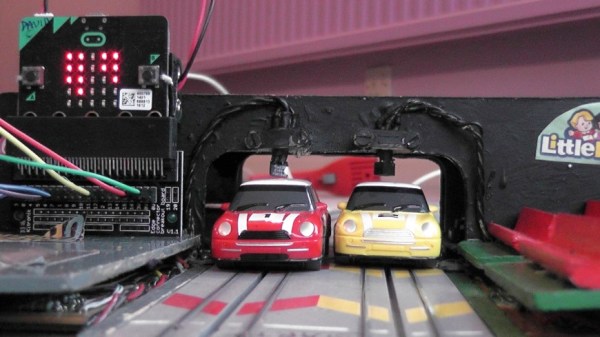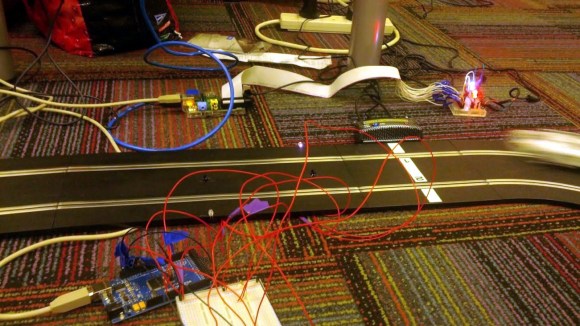Like the Raspberry Pi, the BBC Micro Bit had a goal of being foremost an educational device. Such an inexpensive computer works well with the current trend of cutting public school budgets wherever possible while still being able to get kids interested in coding and computers in general. While both computers have been co-opted by hackers for all kinds of projects (the Pi especially), [David]’s latest build keeps at least his grandkids interested in computers by using the Micro Bit to add some cool features to an old toy.
The toy in question is an old Scalextric slot car racetrack – another well-known product of the UK. But what fun is a race if you can’t keep track of laps or lap times? With the BBC Mirco Bit and some hardware, the new-and-improved racetrack can do all of these things. It also implements a drag race-style light system to start the race and can tell if a car false starts. It may be a little difficult to intuit all of the information that the Micro Bit is displaying on its LED array, but it shouldn’t take too much practice.
The project page goes into great detail on how the project was constructed. Be sure to check out the video below for some exciting races! The build is certain to entertain [David]’s grandkids for some time, as well as help them get involved with programming and building anything that they can imagine. Maybe they’ll even get around to building a robot or two.
Thanks to [Mark] for sending in this tip!













